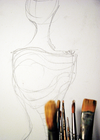Overview of 2D animation programs
|
Despite blockbusters such as Toy Story and Shrek , conventional cartoons still have countless fans, with growing audiences for budding cartoonists and animation hobbyists. In the analog age, the artist had to take up a pencil and draw an entire picture over and over for succeeding frames.
Flip books functioned according to the same scheme: One second of story required 30 hand-drawn images. Even if the protagonist only moved a hand, the cartoonist had to conjure up the image on paper a number of times to achieve smooth animation. In the digital age, it's a lot easier to accomplish.
KTooN
In 2002, two Colombians decided to facilitate their daily work as animators with the help of open source software, and KTooN was born. Sponsored by public institutions, development continued until 2006.
[...]
Buy this article as PDF
Pages: 4
(incl. VAT)






